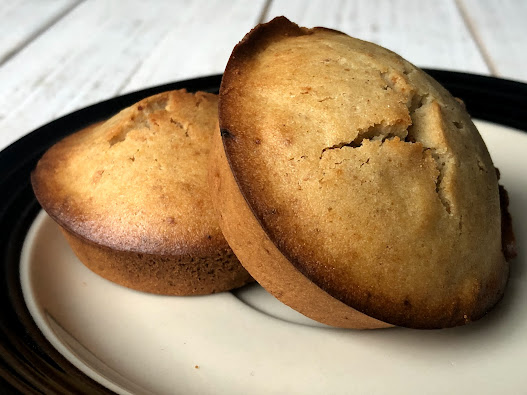See I told you I would post this tomorrow. Lucky for me, every day has its own tomorrow, so it doesn't matter that it was like a week ago that I said that. Right?
So these little cakes aren't really the sort of thing I would typically think of as a dessert. They're kind of more like something you'd have with a cup of tea in the afternoon, but I gotta say I just wasn't having any luck finding anything deserty to do with this meal and I kind of just picked this in an act of desperation. I don't mind though, because they were good and the whole family liked them.At first I was like, great, another weird ingredient I won't be able to find. But fonio flour was actually readily available on Amazon, though it was a bit pricey. Here's the brand I ended up ordering (right):
You're going to start making the dough by mixing two cups of fonio flour with two cups of regular all purpose flour.
Now mix 1 1/2 cups plus two tablespoons of sugar with 1 cup of water (the measurement is a bit weird because I cut the original in half).
Add the margarine, egg, milk powder, and yeast. The original recipe said to wait and add the yeast just before putting the batter in the muffin tin, but I'm guessing the recipe authors were using fresh yeast and I converted this to use active dry, and you can't really mix that in at the end.
Mix in the flours. The recipe says knead, but the dough is pretty wet so just mix it up until it's smooth.
Grease your mini muffin tin and then drop the batter in, filling each cup up halfway.
Fonio Cakes
from m.afrik-cuisine.comIngredients
- 2 cups fonio flour
- 2 cups all-purpose flour
- 1 5/8 cups sugar
- 1 cup water
- 1/4 cup margarine, melted
- 1 large egg
- 7/8 cup milk powder
- 1 1/8 tbsp active dry yeast
- 1 tsp vanilla extract
Instructions
- Preheat the oven to 350 degrees.
- Mix the two flours together.
- Now mix the sugar and water. When the sugar dissolves, add the egg, milk powder, yeast, and margarine.
- Add the flour and mix until you get a smooth batter. Let rest for 30 minutes.
- Coat a mini muffin pan with a little bit of oil. Fill each cup halfway.
- Bake for 10 to 15 minutes. Let cool on a rack before serving.





















.svg/250px-Mali_(orthographic_projection).svg.png)












.svg/800px-Maldives_(orthographic_projection).svg.png)



